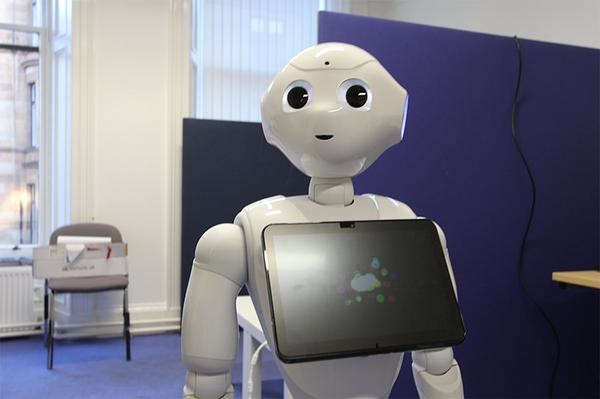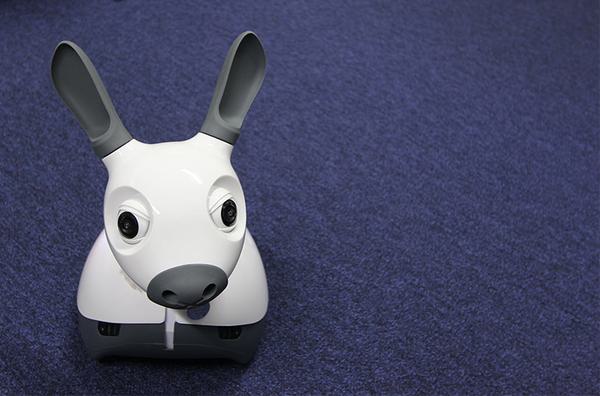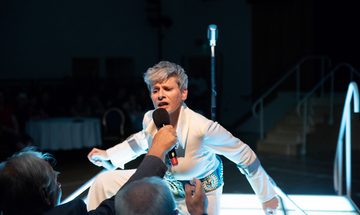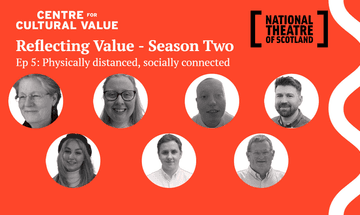News Story
They were once the vision of a fantastical future, depictions of a reality spun from the minds of science fiction writers for our entertainment.
Now they are vacuuming our living rooms, cutting the lawn, answering our everyday domestic commands and bringing comfort and company to some of the most vulnerable in society.
Where once the world envisioned by sci-fi authors like Isaac Asimov and Michael Crichton seemed reassuringly far-fetched, these days, the distance between fiction and reality is less than we think.
The robots are with us. And the future is now.
Interference, a new trilogy of plays from the National Theatre of Scotland, is exploring the rise of the social robot, examining how robotic technology might alter and impact on our relationships, or capacity for care and even the very definition of what it is to be human. As part of the research and development process, the creative team behind the trilogy – writers Morna Pearson, Hannah Khalil and Vlad Butucea – visited a laboratory in Glasgow at the forefront of this pioneering industry.
There they met Ruud Hortensius is a post-doctorate research fellow in School of Psychology and Institute of Neuroscience and Psychology at the University of Glasgow, studying the interaction between people and social robotics.

“A social robot is an artificial agent that engages the human at a social level,” he explains. “It reacts to the human, has emotions, allows for social interaction.
“My main interest is the interaction between people and, in recent years, the interaction between people and social robotics or other artificial agents.
“How we develop these bonds with social robots. Do we use the same brain mechanisms as we use in everyday life? When we are interacting with humans, can we use these same mechanisms to interact with a robot as well. What’s the limit of human-social cognition?
“It’s a very broad category. It’s really dependent on how people perceive the robots. For example, the Roomba (a vacuum cleaner) can be considered a social robot as well.”
While the dystopian computerised futurism of Crichton’s Westworld and Asimov’s The Last Question are extreme, Ruud points out that humans are already willingly ceding to robots in everyday life.
“People can buy these robots now, so it’s not something that’s happening outside of society. These robots are everywhere,” he says. “So the question really is, how people interact with these robots and whether they form relationships to the same extent as humans.”
Central to that is the Institute’s study of empathy. It’s a theme explored in Interference, in a world where the march of technology is challenging and redefining intimacy.
Not by coincidence do tech developers give human names to household gadgets. Even the application of “emotions” to a vacuum cleaner can elicit a response in the human brain.
Ruud said: “In one study we looked at empathy and whether you can feel empathy for a robot that is in pain.
“We invited people to the lab for a first testing session, gave them little robots to take home and interact with for five days, and then tested them again to see if they developed more empathy towards the robots.
“The robots are designed to engage humans, they have emotions, and are reacting when they’re not being played with, they have a whole range of emotions from happy to very sad.
“We are currently exploring that in more detail in a subjective level.”
Some evidence suggests humans do develop emotional connections to machines. The researchers at the Institute point to examples of soldiers holding funerals for bomb disposal robots which have been blown up, or asking to work with certain robots and putting their own lives in danger to protect them. There’s even talk of children inviting the household’s Alexa out to dinner.
Now developments in the sphere of robotics – coupled with our willingness to have them in our lives – could eventually see them being deployed in the care industries, where human traits of empathy and compassion are key.
Ruud said: “There is a shortage of care workers, and one thing people working in social robotics are focused on is to see if robots connect with humans on the same social level as other humans would in order to fulfil these caring roles.
“There are two ways, one would be physical care, lifting people and another would be connecting, counteracting loneliness. We have these little bunny-like or dog-like robots for the elderly to connect with. There are also studies with a robotic seal that people are able to connect with on some level. These are being rolled out in some care facilities around the UK and Europe. People can stroke it, cuddle with it.”

The team’s research found signs suggesting humans are able to project emotional responses to non-humans consciously or otherwise, even in the most prosaic of circumstances.
Ruud said: “We did another project with robotic vacuum cleaners. We gave them an emotion. They looked the same but had a different personality – we had a happy one, a sad one, an angry one and an apologetic one. They were roaming around cleaning the space, and we invited the public to ‘feed’ the robots and from that we could establish the preference of the public for one personality over another.
“It’s hard for humans not to ascribe human characteristics to non-humans.”
And as for where it leads us, there are signs that robots might one day overcome the ultimate barrier between humans.
Ruud said: “There’s now increasingly advanced machine-learning algorithms which can get all the data from the online world attached to a person and then reconstruct that person as an artificial agent. So for example when I die, I will still be able to communicate with you, even though I’m a bot. That will be the next thing, I would say.
“There is a Dutch philosopher of technology Koert van Mensvoort who argues that it is the self-portrait of humanity. It can be really flattering, but there’s perhaps a dark side too.
“It’s really for society to find out what the impact of robots is.”
ABOUT THE AUTHOR
Paul English is a Glasgow-based freelance newspaper journalist and broadcaster on radio and television.
Twitter: @paulenglishhack


